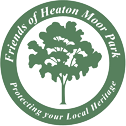If you attend (or have attended) the YCCN (Young Christian Climate Network) community event at St Paul’s church on 9th September 2021 you may have made a wildflower meadow seed roll to take home and plant in your garden. Here are some further details about the seeds and what to do with them.
The seed mix is comprised of native British grasses and wildflowers. It includes up to 23 different species such as buttercups, campion, cowslips, ox-eye daisies, forget-me-nots, knapweed, sorrel and more. All of them are perfect for pollinators and even a small flowering area will help our flying friends to do their job.
Five grams of seed will be enough for one square metre. You can use one or several containers or sow directly into an area of your garden. The soil can be any old soil – these seeds like a low nutrient soil best, but make sure you clear the soil of weeds first.
Sowing
The best time to sow your seeds is in spring or autumn.
It may be easier to mix your seeds with something like sharp sand (four parts sand to one part seed) so that you can see where you’ve sown them.
Sow onto firm soil then lightly rake to a depth of 0.5cm. If your soil is dry, you can water it just a little.
Next
As most of the seeds are perennial, they can be slow to establish and might not flower in the first year. Any annuals should flower in year one.
The grasses will be the first to appear.
Give them a trim in March and again in May.
In September/October cut everything down to about 10cm and leave the cuttings on your soil for a week before removing to allow any seeds to drop back into the soil.
Follow a cutting pattern of March then September/October for best results.
Keep an eye on weeds and if any of your flowers or grasses become too dominant you can thin them to give more room to other species.
Let us know how you get on with your mini meadow and send us your photos.
Good luck and happy planting for pollinators.

